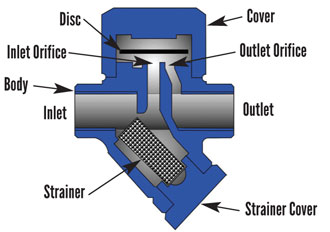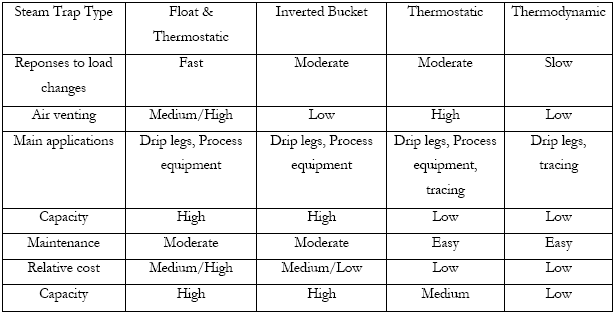STEAM TRAPS
1.) Def: It is a valve Device that discharges condensate and air from the steam lines without discharging the steam.
In order to obtain the fast heating of the product and equipment.
2.) Functions:
Discharge condensate as soon it is formed.
Does not allow steam to escape.
Must discharge air and other incondensable gases
3.) Types of Steam Traps
A.) Mechanical:
It is operated by changes in fluid density.
B.) Thermodynamic:
It is operated by the changes in fluid Dynamics.
C.) Thermostatic:
It is operated by changes in fluid Temperature.
A.) Mechanical Steam Trap (Inverted Bucket Trap)
Advantages:
Can withstand high pressures
Tolerates water hammer
Suited for superheated steam lines
Safer because failure mode is open
Disadvantages:
Trap body must always have enough water
Water seal loss by De-superheated steam
Can be damaged by freezing
B.) Thermodynamic Steam Trap
C.) Thermostatic Steam Trap
4.) Points to be kept in mind while installing Steam Traps
Water hammer:
Condensate picked up by moving steam
Can damage steam trap
Continuous slope in flow direction reduces this
Dirt:
Affects steam trap performance
Strainers:
Helps to remove dirt
Steam locking:
Can occur in rotating machinery
Only float trap has ‘steam lock release’ valve
Pipe sizing:
Correct pipe size – traps affected by resistance to flow
Avoid pipe fittings close to trap – back pressure risk
Air venting:
Important for system warm up and operation
5.) Performance Assessment of Steam Traps
Visual Testing
Sound Testing – Ultrasonic Leak detectors
Temperature Testing – Temperature Guns, Thermal Chalks

















